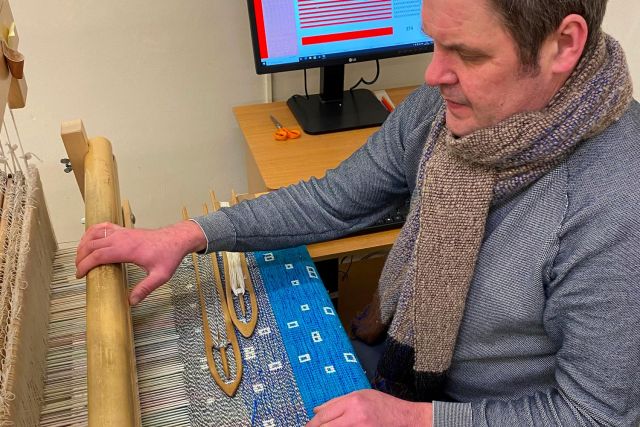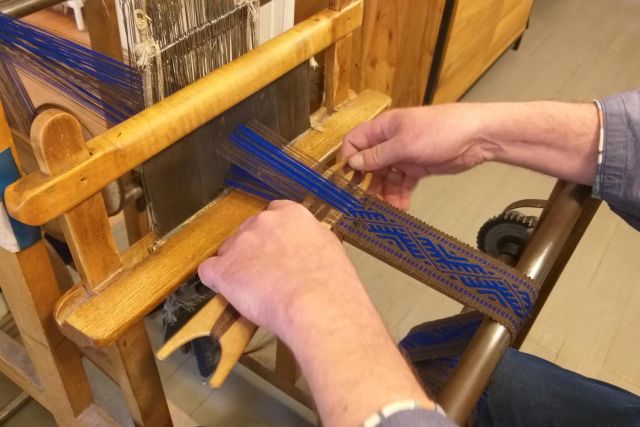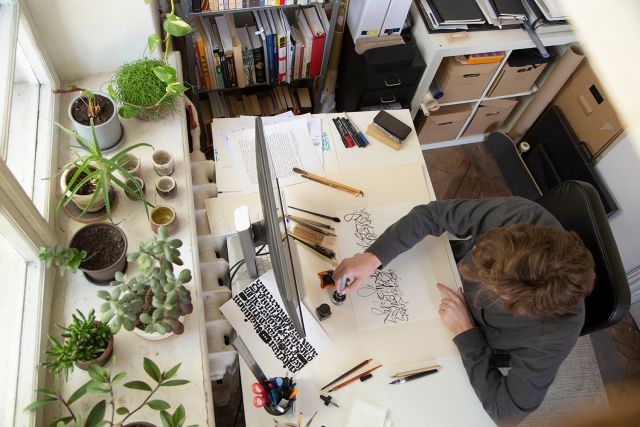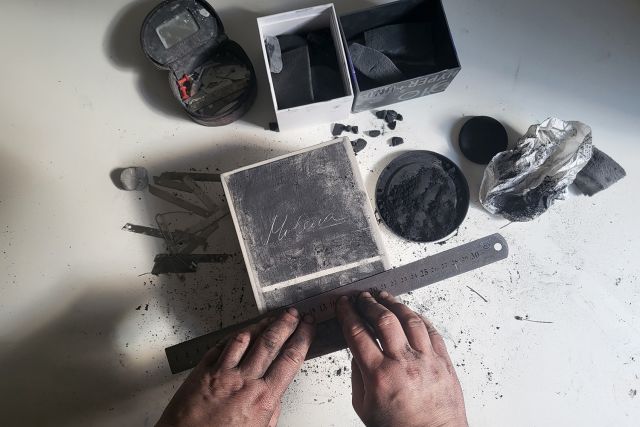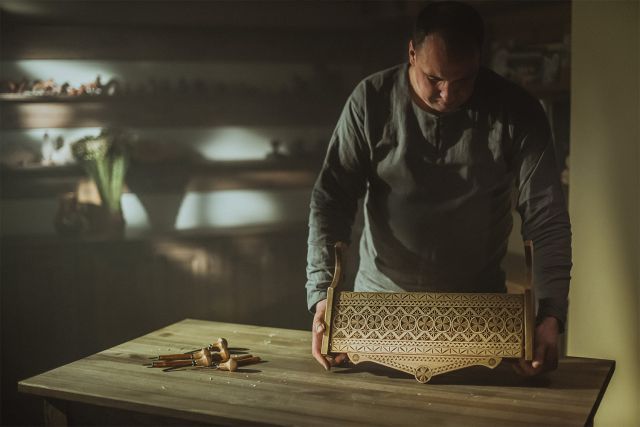This rectangular handbag is created from a fabric woven from linen, wool, metallic threads and fluorescent threads. The bag is made from gold, brown, sand and white hued threads. Vladas Daškevičius uses a double layer weaving technique to handcraft the bag.
Length 35 cm
Width 2.5 cm
Height 45 cm
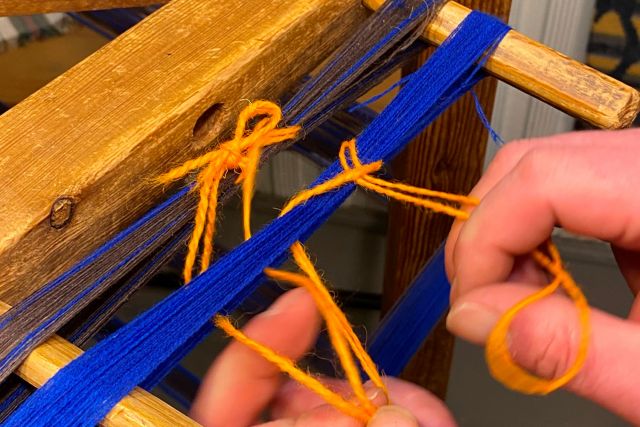
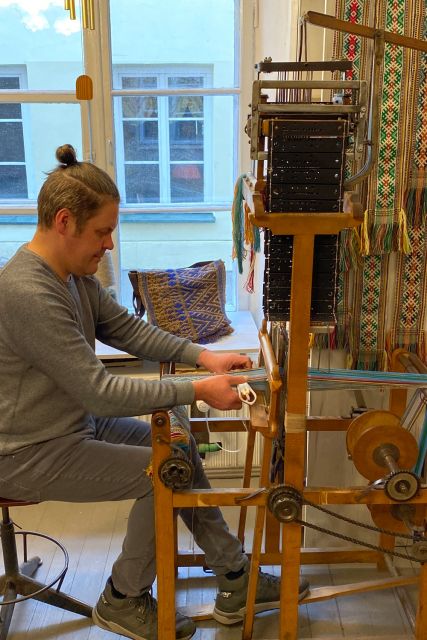
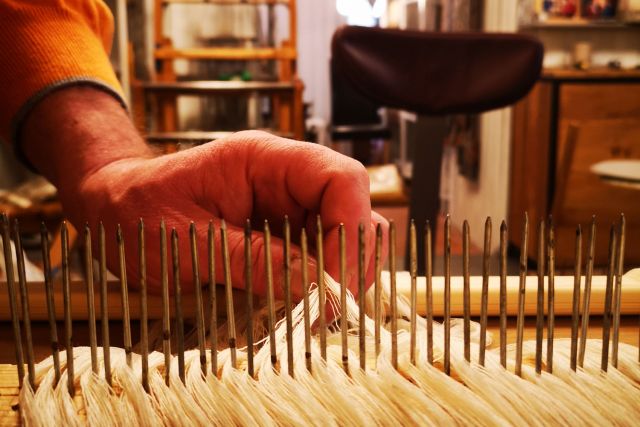
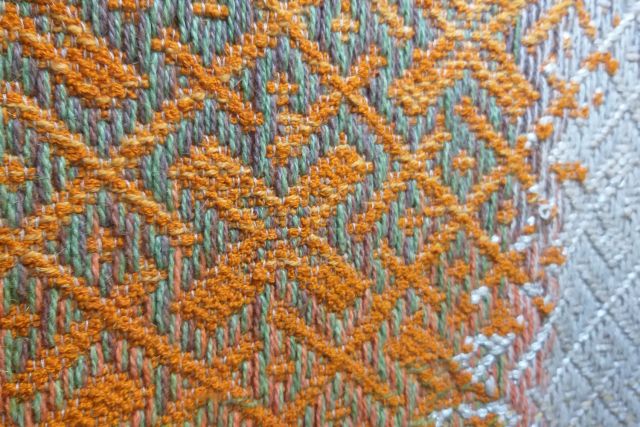
Vladas Daškevičius
- Auskim Studio
- Weaver
- Vilnius, Lithuania
- Master Artisan
- Recommended by Vilnius Academy of Arts
Žydų 2-9, 01131 Vilnius, Lithuania
By appointment only
+370 67585611
Modern threads steeped in tradition
- • Vladas learned the secrets of the craft from his mother and grandmother
- • He teaches where he once studied
- • For him, weaving is a processing of thoughts and feelings
Vladas Daškevičius knows everything about weaving – as he says, he has been wrapped in threads since childhood. His grandmother and his mother were weavers from whom he learned all the subtleties of the craft, before studying textile arts at the Vilnius Academy of Arts. He now continues the family tradition, weaving in a small studio in Vilnius Old Town, weaving bands of impressive designs, patterned rugs and runners and other textile accessories. He also teaches at the Department of Textiles at Vilnius Academy of Arts, where he passes on his weaving secrets to students of textiles arts. He also participates in textile biennials and exhibitions. Weaving patterns for him are like an encoded language in which deeply hidden emotions can be read like acronyms – they have their meanings, but they are not easy to find and read. Weaving for Vladas Daškevičius is a way to connect old traditions with modern life.
Read the full interviewWorks
Photo: ©Vladas Daškevičius

Photo: ©Vladas Daškevičius
This belt is handcrafted from a combination of linen, and wool and finished with a leather and metal buckle. The belt features and interplay of blue and brown hues that contrast against the blown leather and chrome metal. Vladas Daškevičius uses a 1.5-layer technique to weave the fabric used for the belt.
Length 130 cm
Width 0.5 cm
Height 5 cm

Photo: ©Vladas Daškevičius
This bracelet is handcrafted from fabric handwoven from a combination of metallic threads as well as fluorescent threads and finished with a leather and metal buckle. Vladas Daškevičius creates the bracelet from a combination of gold, white and black hues using a 1.5-layer weaving technique to do so.
Length 24 cm
Width 0.3 cm
Height 2 cm

Photo: ©Vladas Daškevičius
This bracelet is handcrafted from a fabric handwoven from a combination of metallic threads and fluorescent threads and finished with a contrasting leather and metal buckle. Vladas Daškevičius creates the bracelet from a combination of gold, white and black hues using a 1.5-layer weaving technique to do so.
Length 24 cm
Width 0.3 cm
Height 2 cm





